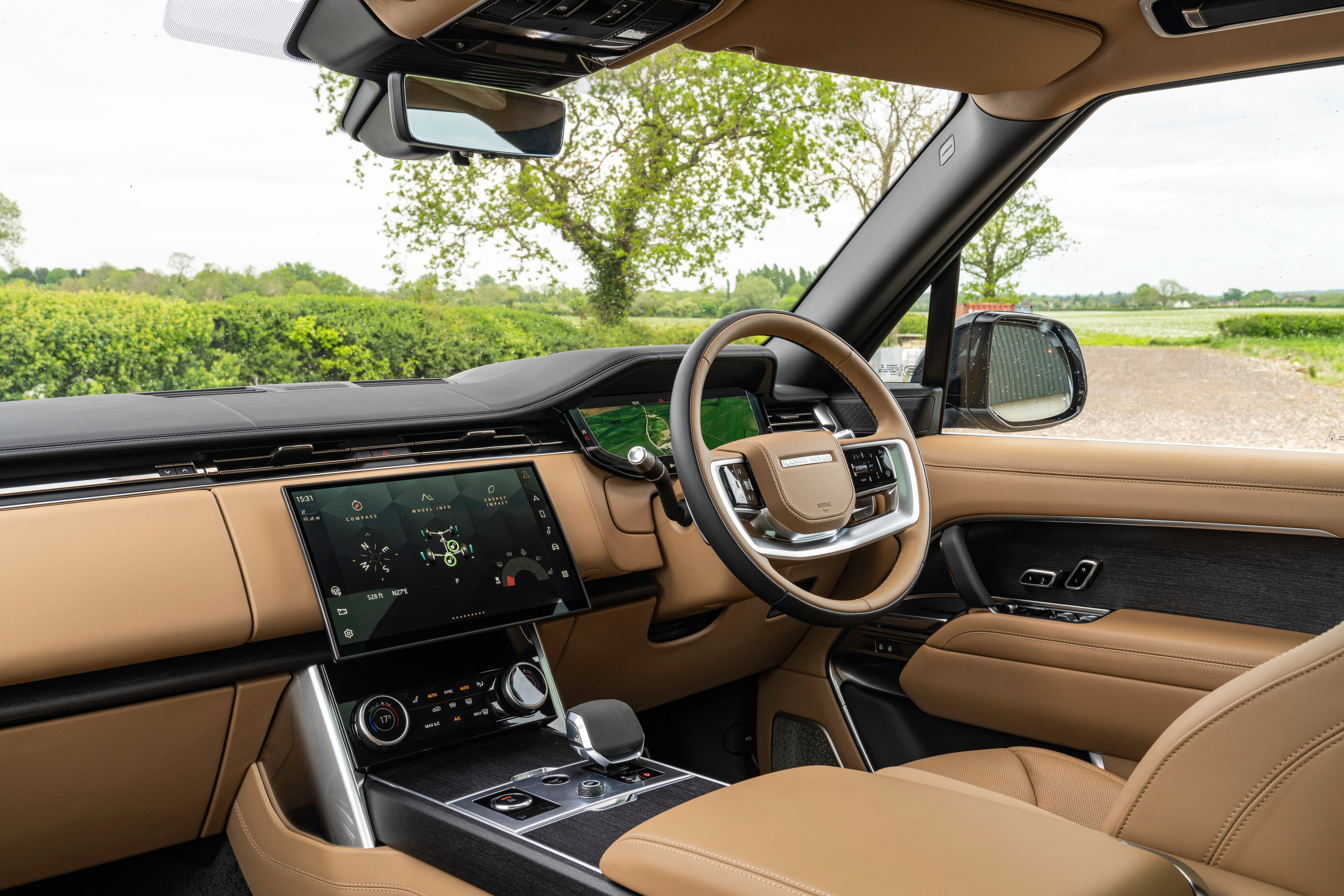
Everyone knows, or thinks they do, that the Range Rover has always been a superb car both on the road and off-road. That was after all the thinking behind the original iteration launched more than half a century ago – a more civilised Land Rover that could work in the country estate and look smart in town. This rare blend of skills, its status as the first of its kind, plus a fair dose of snob value has ensured its enduring success, under successive management and corporate ownership. Currently, it’s under the stewardship (with Jaguar) of Tata, the giant Indian industrial conglomerate, with commendable, though overdue, plans to completely electrify the range. The greening can’t come quickly enough.
Now, in its fifth generation, the Range Rover still does all of the things it used to do, but these days the car can be best enjoyed in an underground car park with big concrete pillars standing sentinel around extremely tight corners. In the past, such environments became increasingly challenging for the ever-larger versions of the Range Rover that came out (the 1970 original looked like it could fit in the boot when stood next to its great-grandchildren). Indeed, it got so bad that parking became an almost impossible task, seriously eroding the vehicle’s famed multipurpose credentials. You’d be doing five-point turns and hoping not to scrape that expensive bodywork.
Now things are different. The all-new Range Rover not only has four-wheel drive to get you up Kilimanjaro, but it also has four-wheel steering to get you into a tight parking space, or, indeed around a corner in a crowded city steeet or country lane. The back wheels moving in sympathy with the front transforms the urban practicality of this luxury behemoth and endows it with the turning circle of a Mini. The vast array of options and information that lies behind the medium-sized touchscreen in the dash also contains a handy table of vehicle dimensions, and of course, the height is adjustable via the air suspension settings. The usual auto parking options, sensors, and a remarkable camera system that allows you to sort of virtually stand outside the vehicle complete the picture. You have complete confidence that those expensive classic lines aren’t going to get scraped.
THE SPEC
Range Rover Autobiography 350HP
Price: £122,850 (as tested, range starts at £97,900)
Engine capacity: 3.0-litre diesel; 6-cylinder in-line; 8-speed auto
Power output (hp): 350
Top speed (mph): 145
0-60mph (seconds): 5.8
Fuel economy (mpg): 35.6
CO2 emissions (g/km): 208
What’s reassuringly the same, though, is that distinctive profile, with the “floating” roof look, the now slimmer styling groove running down the flanks, and the split tailgate. This time, though, the Range Rover has a new party trick: a powered rear door which raises to reveal a powered lower tailgate that will rest above the bumper, allowing you to picnic while you watch the polo. That sort of thing. They’ve also abolished the rear lights, in the sense that, out of use, all you see is a pair of slim black vertical styling lines. The styling “gills” behind the front wheels are narrower than in the previous model, but the overall effect of this decluttering is that it makes the car slightly slab-sided, and in white, it looks a bit like a fridge-feeezer on wheels. The front is clearly an evolution from the last few version of the car, wedgy and with a relatively small grille compared to its many rivals.
In short, or “in large” I suppose, the Range Rover has retained its distinctive presence on the road, and it’s fair to say there’s nothing quite like it. The interior and refinement is rivalled by the new, even more lavish, interior of the likes of the Bentley Bentayga, which majors on bespoke craftsmanship, but the Range Rover is an undeniably desirable, aspirational product. Reassuringly costly, too, with (practically speaking) nothing under six figures these days. The high “command” driving position is also still there. This is about much more than simply being perched high up, eye to eye with bus drivers, and more a sense that you’re indeed in control of all you survey as far as the eye can see. Which in the case of some owners will be literally true as well.

I was pleasantly surprised that the diesel engine in my car was as smooth and economical as it was, and with excellent turbo charging and a little extra boost from a mild hybrid electrified set-up, the acceleration is, like everything else about the vehicle, impressive. With its poise and sense of calm repose, it’s no sports car, and I wouldn’t really want to push its two-and-a-half-tonne bulk too far in defiance of Newtonian physics. There’s also a plug-in hybrid version, paired with diesel or V8 petrol power, and, pleasingly, an all-battery electric version on the way as well. You can specify an extra-long wheelbase version (as used by the prime minister) which can come with three rows to seat seven lucky passengers, and various special versions from Land Rover SV.
It’s all about luxury, whether you’re on the move or relaxing, relieved, in an underground car park. There are plenty of able rivals, from Bentleys and Rolls-Royces to Mercedes-Benz and Lamborghinis, some superior, and even more costly. Yet the Range Rover retains its tasteful, handsome allure. Even during a cost of living crisis, never have the landed gentry had such a choice of go-anywhere status symbols. I’ll leave that thought there.







